How to get rid of cyanobacteria or blue green algae?
Introduction to Cyanobacteria and Blue Green Algae
Understanding how to get rid of cyanobacteria is crucial for aquarists who encounter this common issue. Cyanobacteria, often referred to as blue green algae, are not true algae but photosynthetic bacteria that can create unsightly mats in your aquarium. Addressing this problem promptly is essential to maintaining the health and beauty of your aquatic environment.
Identifying Cyanobacteria in Your Aquarium
Recognizing cyanobacteria in aquarium setups is the first step towards treatment. Often mistaken for algae due to their appearance, cyanobacteria typically form slimy, blue-green sheets that can cover plants, substrate, and decorations. Their distinct color and texture are key identifiers, helping aquarists to distinguish them from other types of algae.

Understanding the Causes of bacteria Growth
Uncovering the underlying causes is pivotal when getting rid of cyanobacteria. Several factors can contribute to their proliferation, including excess nutrients, poor water circulation, and inadequate lighting conditions. Cyanobacteria thrive in environments rich in phosphates and nitrates, often a result of overfeeding, overstocking, or infrequent water changes. By identifying and rectifying these contributing factors, you can create a long-term strategy for managing and preventing cyanobacteria outbreaks.
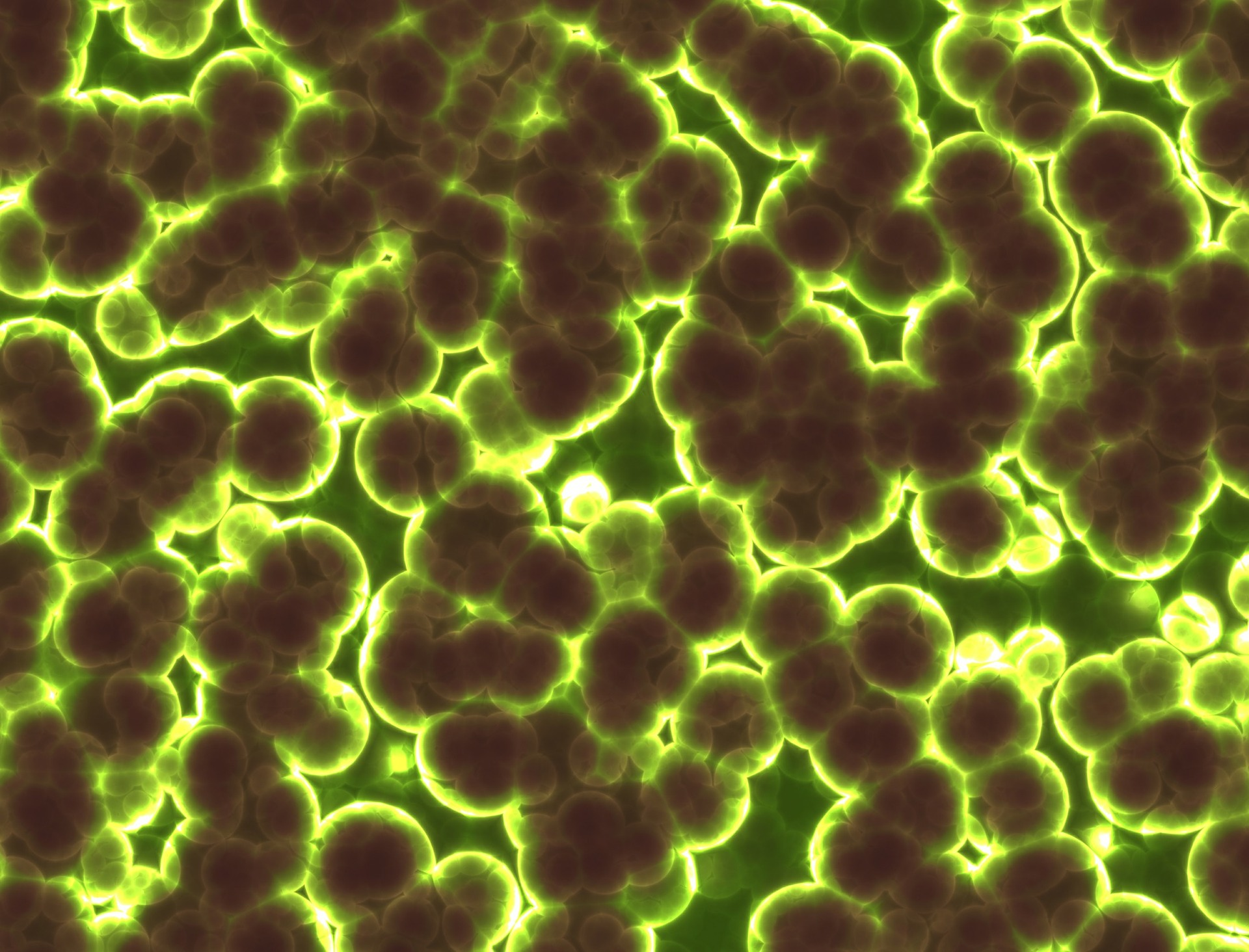
The Impact of Lighting on Cyanobacteria Development
Lighting plays a significant role in cyanobacteria treatment in aquarium settings. These bacteria require light to perform photosynthesis, and an imbalance in lighting—either too much or too little—can encourage their growth. Adjusting the lighting duration and intensity in your tank is a crucial step in creating an environment that discourages cyanobacteria while still supporting the needs of your aquatic plants and inhabitants.

Nutrient Imbalances and Cyanobacteria Proliferation
Combatting cyanobacteria in planted aquariums often involves addressing nutrient imbalances. Excessive nutrients in the water, which can come from decomposing organic matter, fish waste, or uneaten food, act as a fertilizer for cyanobacteria. Regular testing and maintenance to manage these nutrient levels are essential. This may include frequent water changes, substrate vacuuming, and careful feeding practices to prevent the conditions that allow blue green algae in aquarium environments to flourish.
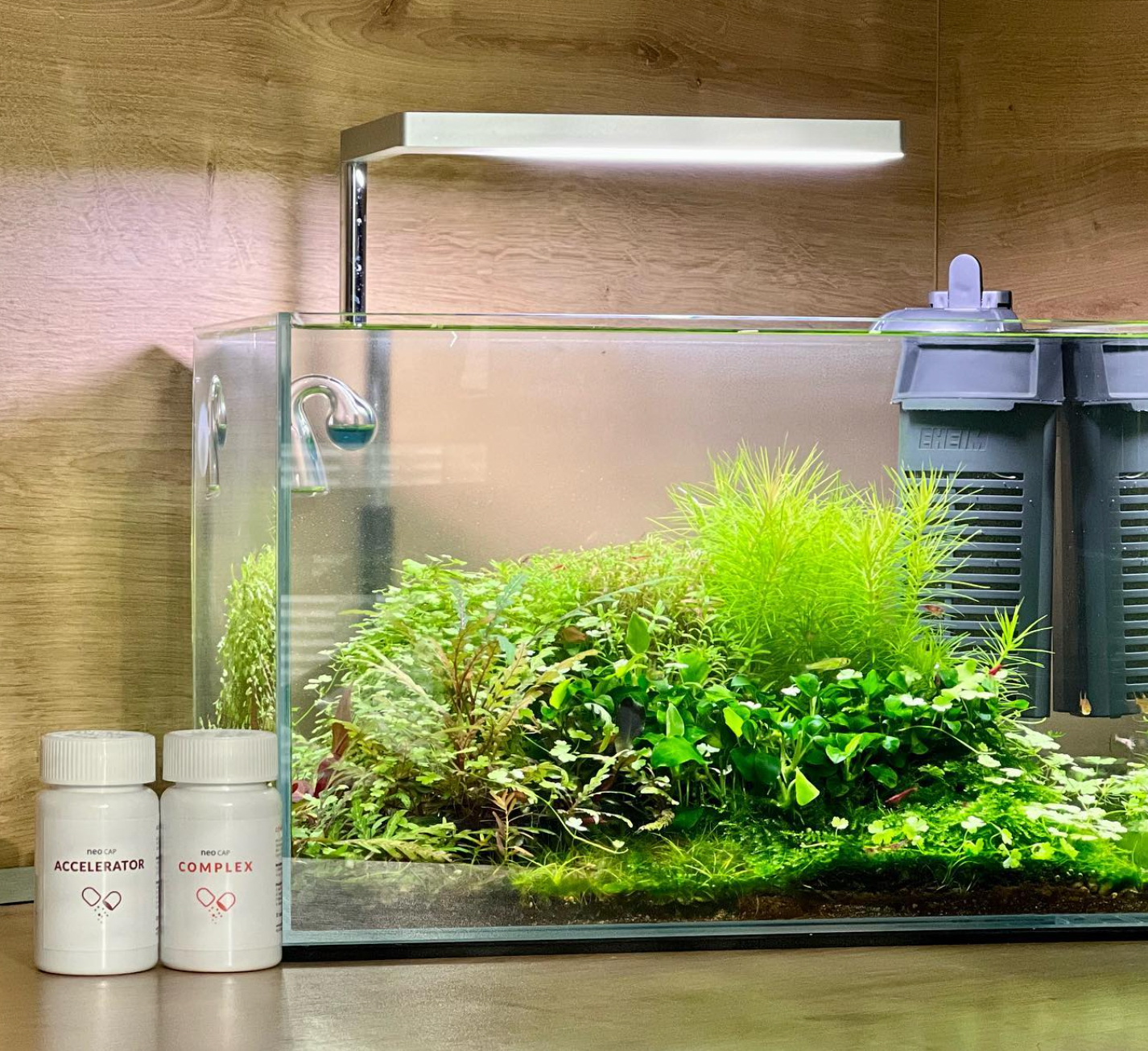
The Role of Water Circulation in Controlling Blue Green Algae
Adequate water flow is vital in the fight against blue green algae. These bacteria thrive in stagnant conditions where water changes are infrequent, and debris accumulates. Improving the water flow in freshwater aquariums can disrupt the environment that blue green algae favor, helping to prevent the formation of blue green slime. Circulation pumps or strategically positioned filter outputs can enhance flow, ensuring that all areas of the tank are oxygenated and cleansed of waste.
Regular Maintenance to Prevent Blue Green Algae
Consistent tank clean practices are key in preventing blue green algae buildup. Regular water changes remove the excess nutrients that fuel algae growth, and vacuuming the substrate eliminates decomposing organic matter. Keeping the tank clean also promotes beneficial bacteria that compete with cyanobacteria, creating a healthier ecosystem less conducive to blue green slime.
Cleaning Techniques to Remove Blue Green Algae
Physically removing blue green algae is often necessary for severe infestations. Manually scrubbing the surfaces of the fish tank and siphoning out the blue green slime can significantly reduce the immediate presence of cyanobacteria. Care should be taken to perform these tasks during water changes to remove any dislodged algae growth effectively.
Chemical Treatments for Blue Green Algae Removal
In some cases, chemical treatments may be necessary to control blue green algae. Products specifically designed for cyanobacteria eradication can be effective but should be used cautiously, as they can also affect plants and beneficial bacteria. It's important to follow the instructions carefully and consider chemical treatments as a last resort after physical removal and environmental adjustments have been attempted.
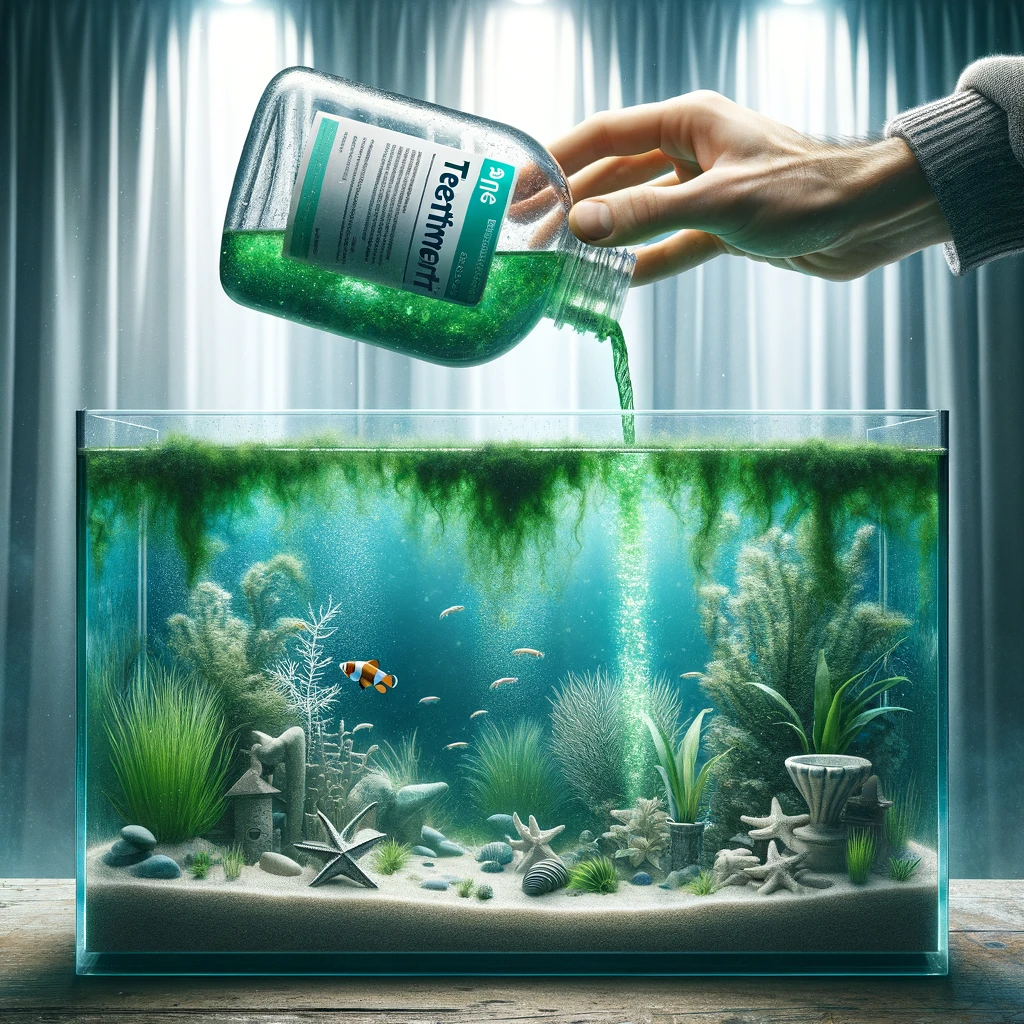
Natural Ways to Combat Blue Green Algae
There are natural strategies for managing blue green algae in freshwater aquariums that align with the aquarium hobby ethos of mimicking natural ecosystems. Increasing plants that compete with algae growth for light and nutrients can help control cyanobacteria. Also, introducing algae-eating fish or invertebrates that feed on blue green slime can be a part of an integrated pest management approach, helping to keep aquarium water clean and balanced. However, if things go too far and the tank is taken over by algae, the total blackout for a few days will surely help to get rid of them.

The Importance of Quarantine to Prevent Spread
Introducing new plants or fish without proper quarantine can inadvertently add blue green algae to your aquarium.
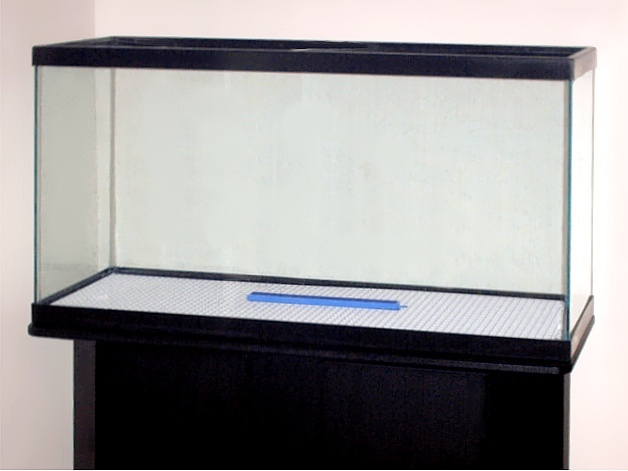
Even a small amount of blue green slime on a new plant can rapidly expand into a full-blown problem. A dedicated quarantine tank allows for observation and treatment of new additions, ensuring they are free of cyanobacteria and other pathogens before they join the main display. This precautionary step is a fundamental practice within the aquarium hobby to maintain water quality and the overall health of the aquarium.
CO2 Injection: A Double-Edged Sword for Aquarium Health
CO2 injection is lauded for promoting lush plant growth in freshwater aquariums, but it can also influence blue green algae presence. While plants thrive with added CO2, competing effectively with algae growth, an imbalance can occur if CO2 levels are not carefully regulated. Too much CO2 can lower pH to levels that stress fish and beneficial bacteria, potentially giving blue green algae an advantage. Conversely, too little CO2 can encourage algae growth due to the plants not utilizing all available light and nutrients.
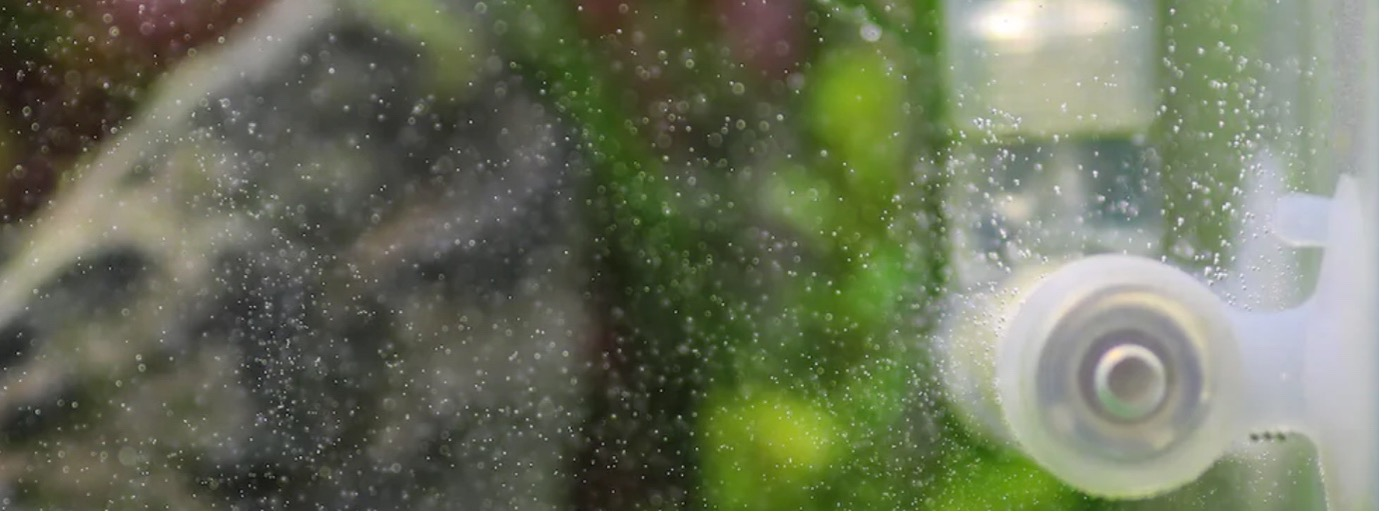
Balancing CO2 Levels to Discourage Blue Green Algae
Maintaining balanced CO2 levels is critical to deterring blue green algae. Excess light and CO2 can cause a surge in algae growth, so it's essential to adjust these elements to match the tank's needs.
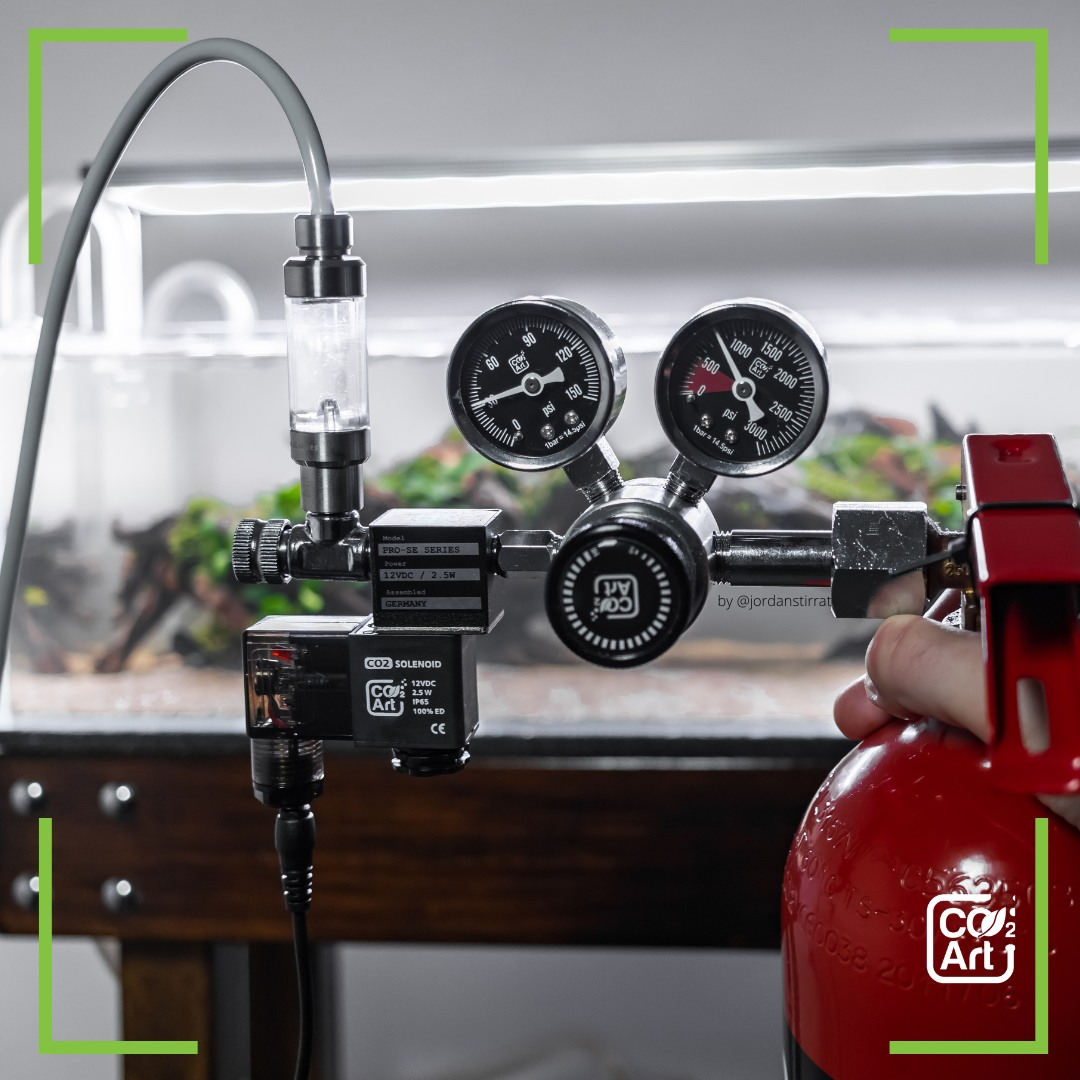
A well-regulated CO2 system, paired with appropriate light intensity and duration, can help keep blue green algae at bay while supporting healthy plant and fish tank conditions.
Utilizing UV Sterilizers to Control Algae and Bacteria
UV sterilizers can be an effective tool for controlling blue green algae. By exposing aquarium water to ultraviolet light, these devices can disrupt the DNA of cyanobacteria, inhibiting their ability to reproduce. UV sterilization can thus serve as part of a comprehensive approach to manage water quality, alongside regular water changes and nutrient control, to reduce the occurrence of blue green slime in the tank.
The Role of Aquarium Plants in Outcompeting Blue Green Algae
A well-planted tank can be one of the best defenses against blue green algae. Robust aquatic plants absorb a great deal of light and nutrients, leaving less available for algae growth. They also produce oxygen, which helps to create an environment where cyanobacteria are less likely to thrive. Ensuring your plants are healthy and vigorous is a key strategy in a successful aquascaping approach to prevent blue green algae from gaining a foothold.

Monitoring and Adjusting Tank Parameters to Deter Blue Green Algae
A proactive approach to preventing blue green algae involves diligent monitoring and adjustment of tank parameters. This includes regular testing of ph levels, nutrient balance, and water hardness to create unfavorable conditions for algae growth. Sudden changes in these parameters can indicate a developing issue, and early detection allows for swift correction. By keeping aquarium water conditions stable, you reduce the risk of cyanobacteria outbreaks and promote a thriving ecosystem for plants and fish tank inhabitants.
When to Seek Professional Help with Blue Green Algae
Sometimes, despite best efforts, blue green algae can persist or get out of control. In such cases, it may be necessary to seek professional help. Aquatic specialists can offer advanced insights into combating cyanobacteria bloom, often with methods beyond the scope of typical aquarium hobby resources. They can also help identify and rectify persistent issues in water quality that contribute to the problem, ensuring long-term success for your freshwater aquarium.
Conclusion: Maintaining a Healthy, Cyanobacteria-Free Aquarium
In conclusion, managing blue green algae is a multifaceted challenge that requires a combination of good maintenance practices, careful monitoring of aquarium conditions, and sometimes, professional intervention. By understanding the causes of cyanobacteria and implementing preventative measures, many aquarium hobbyists can successfully maintain aquariums free of blue green slime. With patience and diligence, you can ensure your tank remains a healthy environment where plants can flourish and fish can thrive, without the thread of blue green algae.



